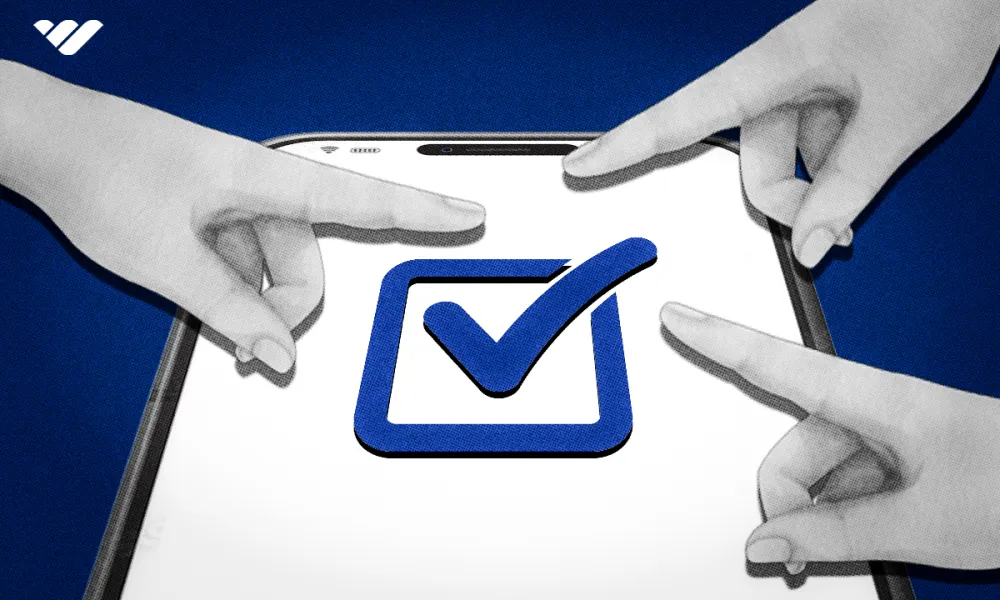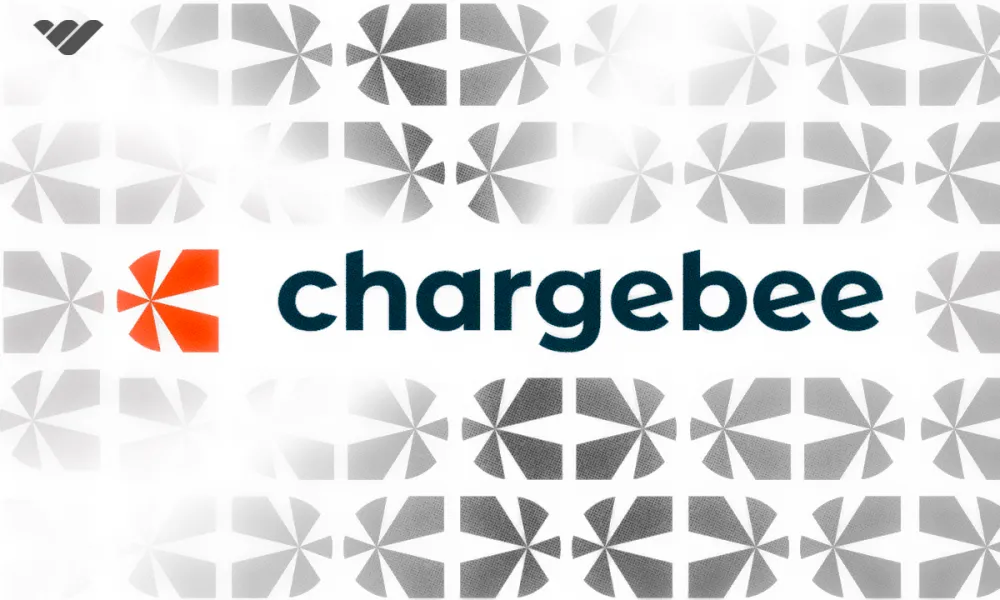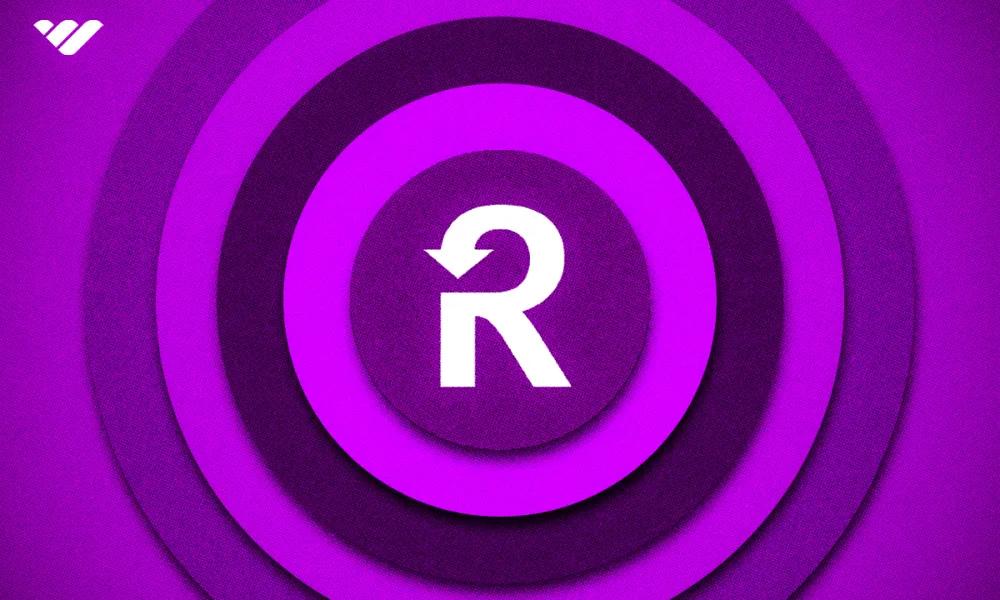Learn about the Data Annotation Tech platform and whether it's legit, with pay details, pros and cons, and alternative options for digital freelancers.
Key takeaways
- Data Annotation Tech pays remote workers $20-40+ per hour to label data for AI training.
- The platform requires passing a Starter Assessment and accepts applications from six English-speaking countries only.
- Freelancers report being suddenly ghosted by the platform after months of consistent work without explanation.
- Data annotation involves tagging text, images, videos, and audio to help AI systems recognize patterns.
- The platform has mixed reviews with 4 stars on Glassdoor but only 3.2 stars on Trustpilot.
From coding to content marketing, AI is changing the way we live and work online. And data annotation is a slice of that pie. The data AI uses often needs to be labeled by humans first.
Freelancers working for DataAnnotation.tech earn money doing just that. But is Data Annotation Tech legit? And is it a worthy online side hustle?
If you’re looking for remote work from home jobs, but you’re feeling confused - don’t worry. In this post, we’ll get you up to speed on how Data Annotation works as a platform, how much you’ll earn, how easy it is, whether it’s worth it, and some key alternatives.
What is a data annotation job?
Put simply, data annotators tag data to help AI models to understand and learn from it. Just as humans learn by example, AI models are trained on existing data. This could include text, images, or videos.
However, for the AI to make sense of this data, it needs to be tagged and labeled with meaningful information. This helps the system to recognize patterns within the dataset, and make predictions.
Of course, that data needs to be labeled as accurately as possible - and on a large scale. That’s where data annotation jobs come in.
Annotators work on writing and coding tasks to develop useful, accurate data to be inputted into AI systems. In most cases, these are remote, work-from-home jobs.
When an AI receives human-labeled data like this, it’s referred to as “supervised learning”. Still, even “unsupervised learning”, where systems are trained on unlabelled data, typically requires some human-labeled data during the later stages.
Discover more remote side hustles that are perfect for working from anywhere.
What are examples of data annotation?
If you can’t picture how data annotation works, here are some examples to make it clearer:
Image annotation
This can include labeling images and specific content within images, and segmenting images for detailed analysis.
For example, on a very basic project, you might add a label of “flat screen TV” to an image of - you guessed it - a flat screen TV.
You’ll typically use techniques like a “bounding box”, which is used to create a rectangle shape around an important object in an image. This helps the AI model with object detection.
Video annotation
Very similar to image annotation, but involves labeling the video frame by frame. You’ll use a tailored annotation tool to record important elements of the video, including objects and movements.
For example, this could be used in traffic management, using videos to identify vehicles and various hazards, including pedestrians.
Audio annotation
Again, this involves adding labels to the audio content to help AI models to understand it. So, for example, a label might specify that a section of the audio is the sound of a car engine running.
Text annotation
With this form of annotation, you’ll be labeling textual content. This can be done in a number of ways, for example, with a focus on the sentiment or intent of the text.
For example, sentiment analysis explores the emotions of the text source. So, this can be used to analyze customer reviews and social media responses.
What is Data Annotation Tech?
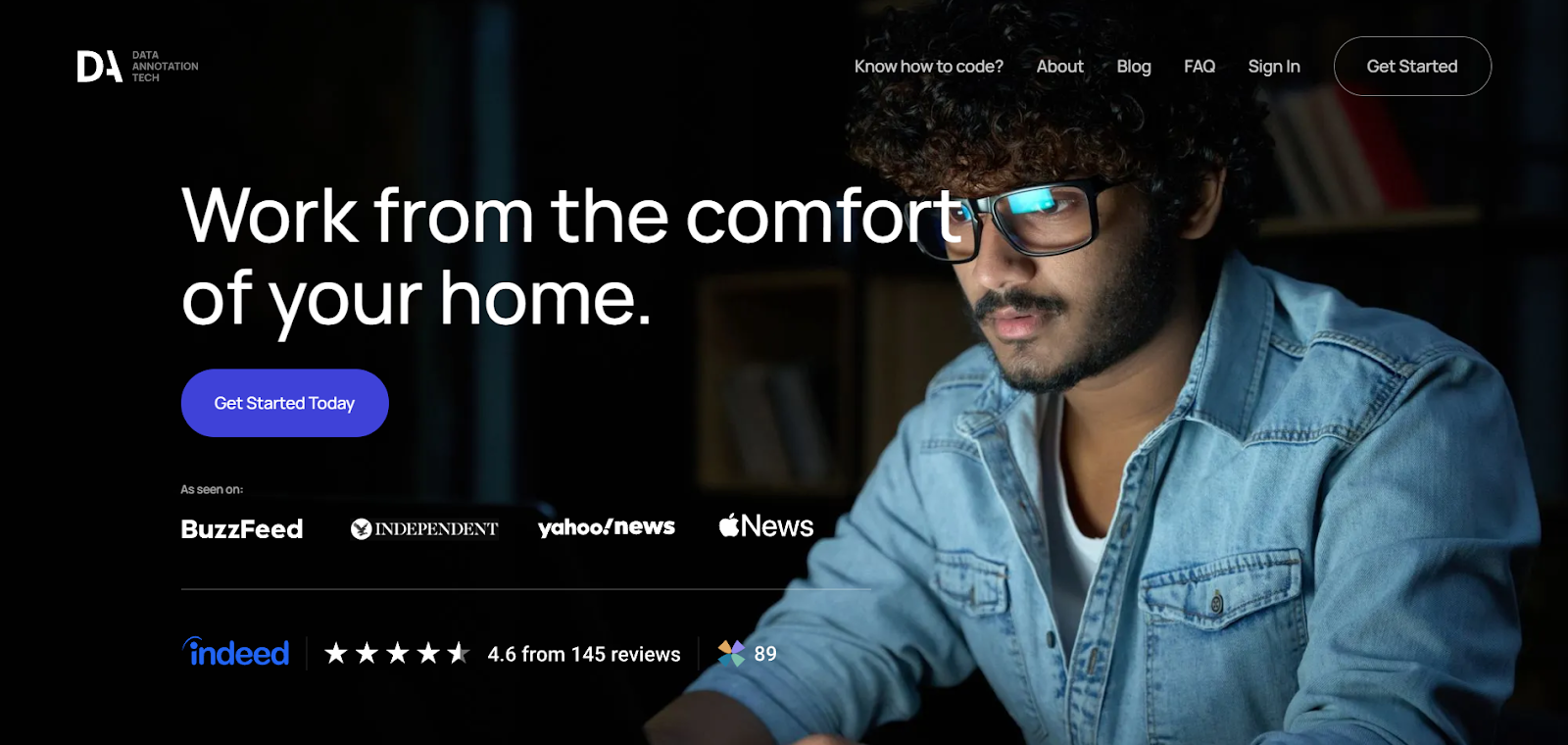
Data Annotation Tech pays remote workers to train AI systems. According to their website, you’re free to work these AI training jobs when and where you want. They offer different projects to work on, so you can pick and choose your tasks.
There are a variety of different tasks available, including training chatbots, survey tasks, and creative writing. If you have particular interests or expertise, some tasks may also focus on these.
The work is suitable for AI newbies, and training is provided free of charge. The work pays well - from $20 per hour.
If you can code, there are also coding tasks available, which can make $40+ per hour.
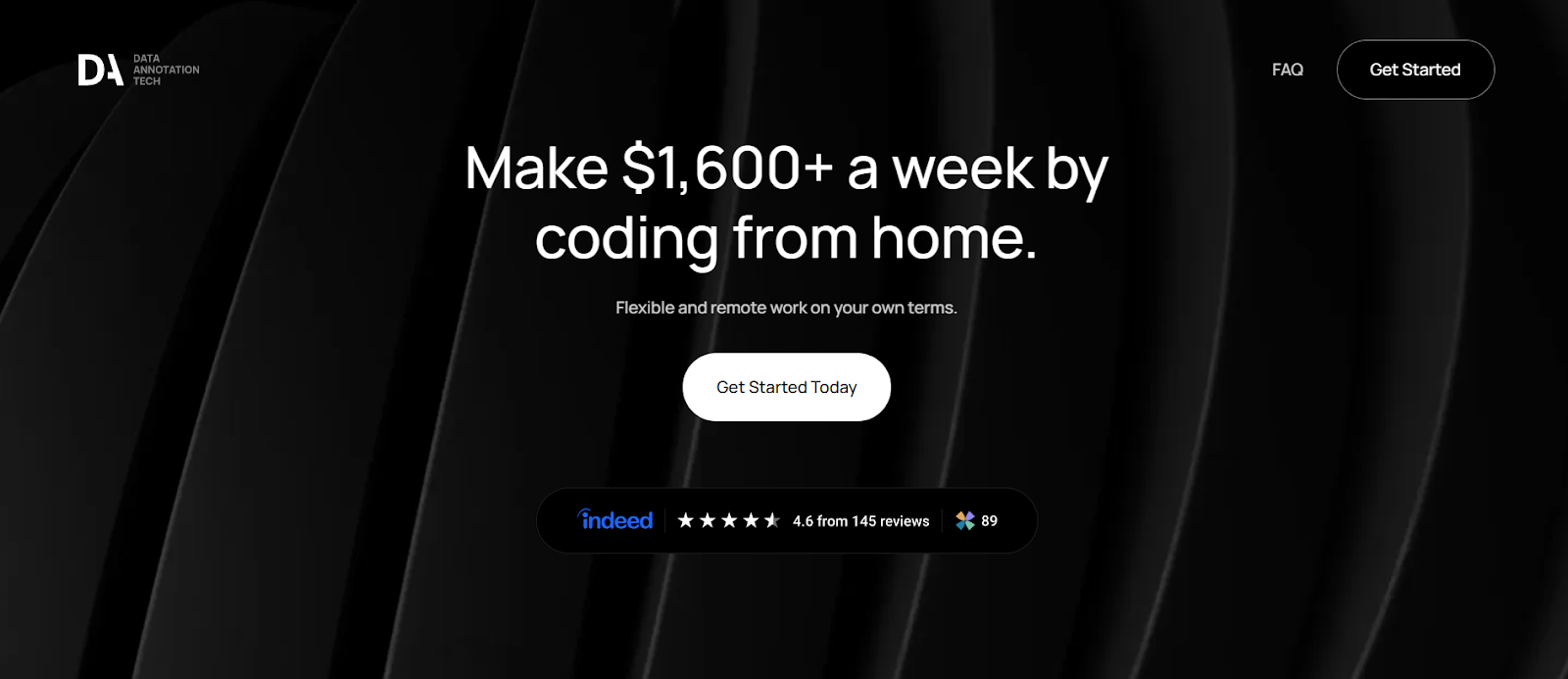
Information about the company itself is harder to find. According to an article from The Verge, DataAnnotation.tech appears to be owned by SurgeAI. They also appear to run Taskup.ai and Gethybrid.io. However, CEO Edwin Chen has not confirmed or denied this.
Still, according to the New York Times, there are also public records that show DataAnnotation.tech is owned by SurgeAI.
How to qualify for Data Annotation Tech?
To work for Data Annotation Tech, you can’t just sign up and start working. You’ll need to create an account and apply first.
The platform is currently accepting applications from the following countries:
- U.S.
- U.K.
- Canada
- Ireland
- Australia
- New Zealand
That being said, it may still be worth creating an account if you live in a different country. According to the platform, they will get in touch if they’re accepting applications for AI training jobs from your country in the future.
Once you’ve made an account, you’ll need to take the Starter Assessment. This should take around an hour to complete, but in some cases, it may take longer (or less time).
You’ll be contacted by email if you pass the assessment. Then you can start finding projects on the platform.
The platform doesn’t specify what the assessment entails, but they do provide some guidelines for the kind of candidates they’re looking for. Core skills include:
- Fluency in English, with an understanding of grammar and spelling
- Critical thinking and reasoning skills
- Research, analysis, and fact-checking
- Creativity
- Motivation
If you’re applying as a coder, you’ll need:
- proficiency in at least one of the following programming languages
- Python
- Javascript
- SQL
- HTML
- C++
- C#
- coding problem-solving skills
- the ability to articulate how you’ve resolved coding problems
As data annotation is an online job, you’ll also need to ensure you have a good internet connection.
Data Annotation pros and cons
So, is it worth giving Data Annotation Tech a go? Taking a look at staff reviews shows a mix of perspectives.
On GlassDoor, the platform has a solid 4-star rating from 105 total reviews.
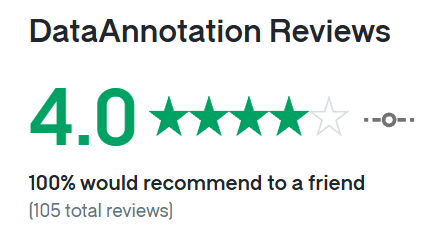
There’s a similar rating of 4 stars on Indeed, as well.

But, it’s rated a bit lower on Trustpilot at 3.2 stars from 443 reviews.
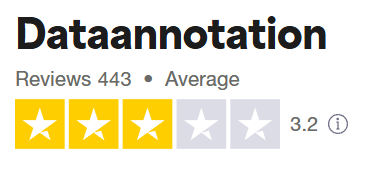
To understand these mixed ratings, it’s important to take a closer look at the platform’s pros and cons.
Data Annotation pros
Good pay
Data Annotation Tech pays upwards of $20 per hour for AI training jobs, which is a pretty solid pay for remote work. As it’s paid by the hour, rather than the task, there’s less pressure on annotators to rush.
Reviewers, like Michelle on Trustpilot, appreciate that the platform values high-quality work.
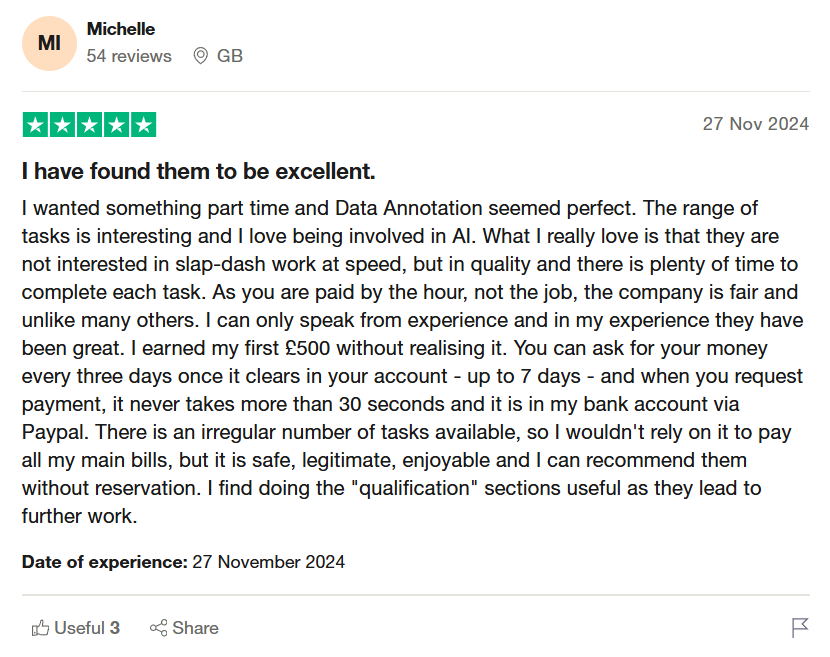
Flexible working
From digital nomads to stay-at-home moms, remote working is more popular than ever. If you’re juggling work with looking after your family or managing studies - or both! - it’s important to find flexible work.
Data Annotation Tech offers this, as you can choose to work on projects whenever you want. This also makes it a great option for a side hustle, if you already have a 9-5.
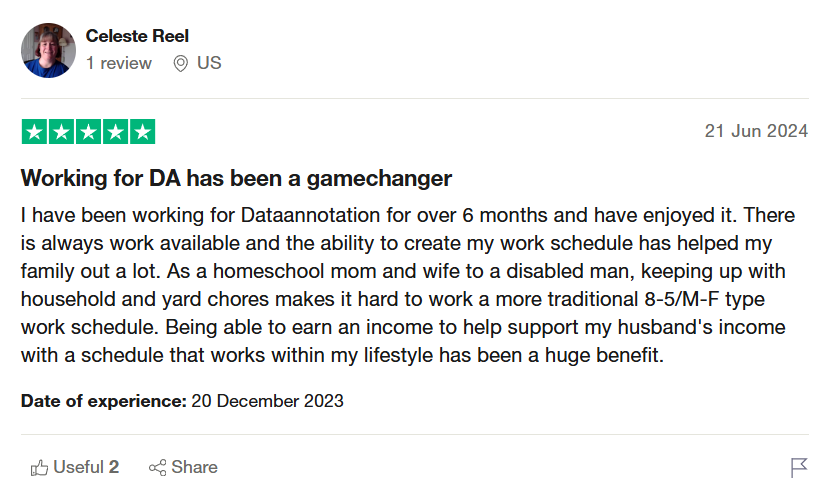
Easy to get started
Whilst data annotation can be surprisingly challenging, Data Annotation Tech is accessible to newbies.
As mentioned in the GlassDoor review below, you won’t be required to have previous experience with annotation or AI. There’s also training provided to help you learn the ropes.
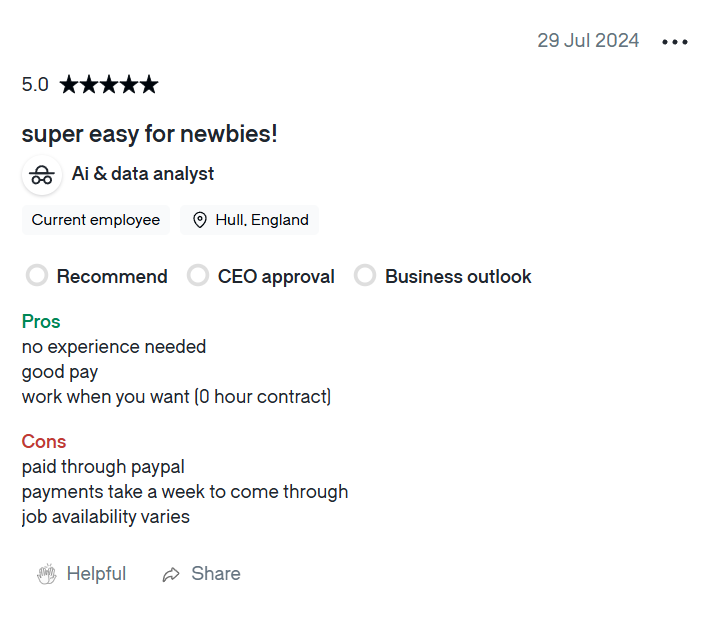
Of course, if you have some coding experience, you could bring in some extra cash, as the rates rise to $40+ per hour. But that’s not essential to get started. That makes this platform a good option for students or those looking for a way into remote working.
Remember if you’re looking to branch out into coding, there are plenty of great resources available on Whop.
For example, Data Engineer Academy offers courses and personalized training in data engineering. You’ll learn everything from ETL processing to data warehousing - and there’s absolutely no need for a computer science degree.

Data Annotation cons
Ghosting long-term freelancers
Multiple former freelancers have posted about losing their role at Data Annotation Tech without warning. According to these freelancers, they’d been working with the platform for some time.
For example, the Trustpilot reviewer below says they were working on a large volume of projects, only for their dashboard to suddenly dry up. According to their review, they reached out to Data Annotation Tech, but hadn’t received a response.
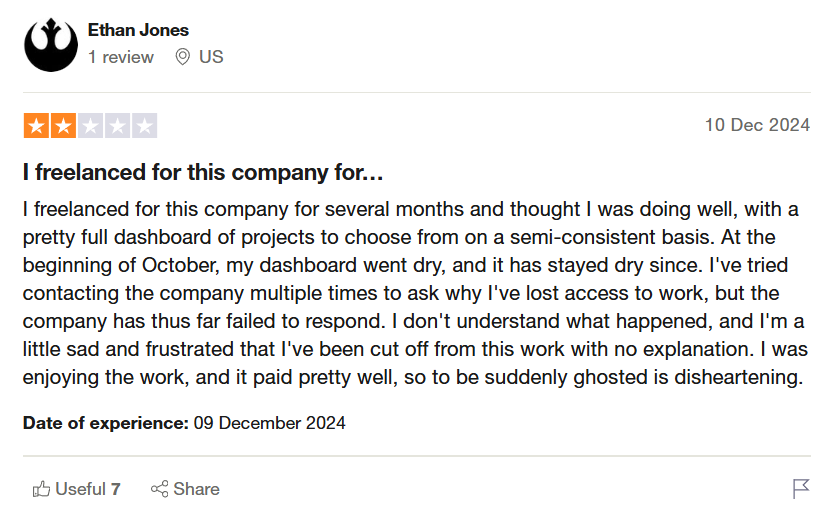
Similar experiences have been reported in reviews on other platforms, like this one from Indeed.
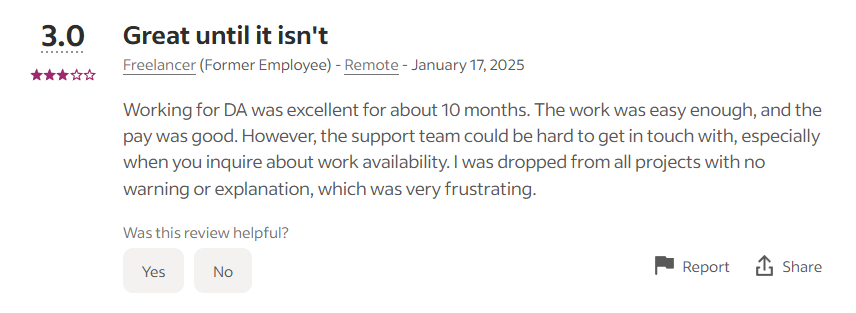
Naturally, this can be a very frustrating experience for freelancers. Although freelancers may expect work to be inconsistent at times, being ghosted by the platform you’ve been earning from with no explanation can have a huge impact.
Poor communication with freelancers
The platform has received criticism from other freelancers about its poor communication. For example, new starters have reported receiving some initial tasks and then suddenly not being able to apply for other projects on the platform with no explanation.
Again, the Reddit reviewer below comments that they tried emailing Data Annotation Tech, but received no response.

Learn the best freelancing websites to make money online.
Unclear hiring practices
Reviewers also comment on the lack of clarity in the application process. Although Data Annotation offers training and claims no experience is required, some have posted about being rejected with no clear reasoning.
This includes candidates who have experience in writing and other valuable skills.

However, it’s important to remember that these reviews are still personal opinions. Other reviewers argue that some of the criticism comes from people who didn’t pass the assessment.

Inconsistent work
Regardless of the mixed reviews, it’s always important to remember that freelance “gig” work can be inconsistent. Ultimately, it relies on demand, which can fluctuate.
Data Annotation Tech may work well as a side hustle, but if you’re searching for a solo remote job to rely on, it might not be suitable for you.
Finding the right side-hustle: Data Annotation alternatives
If you’re looking for remote work-from-home jobs, there are lots of alternatives to Data Annotation Tech to try. We’ll take you through a few of the top choices here:
Whop
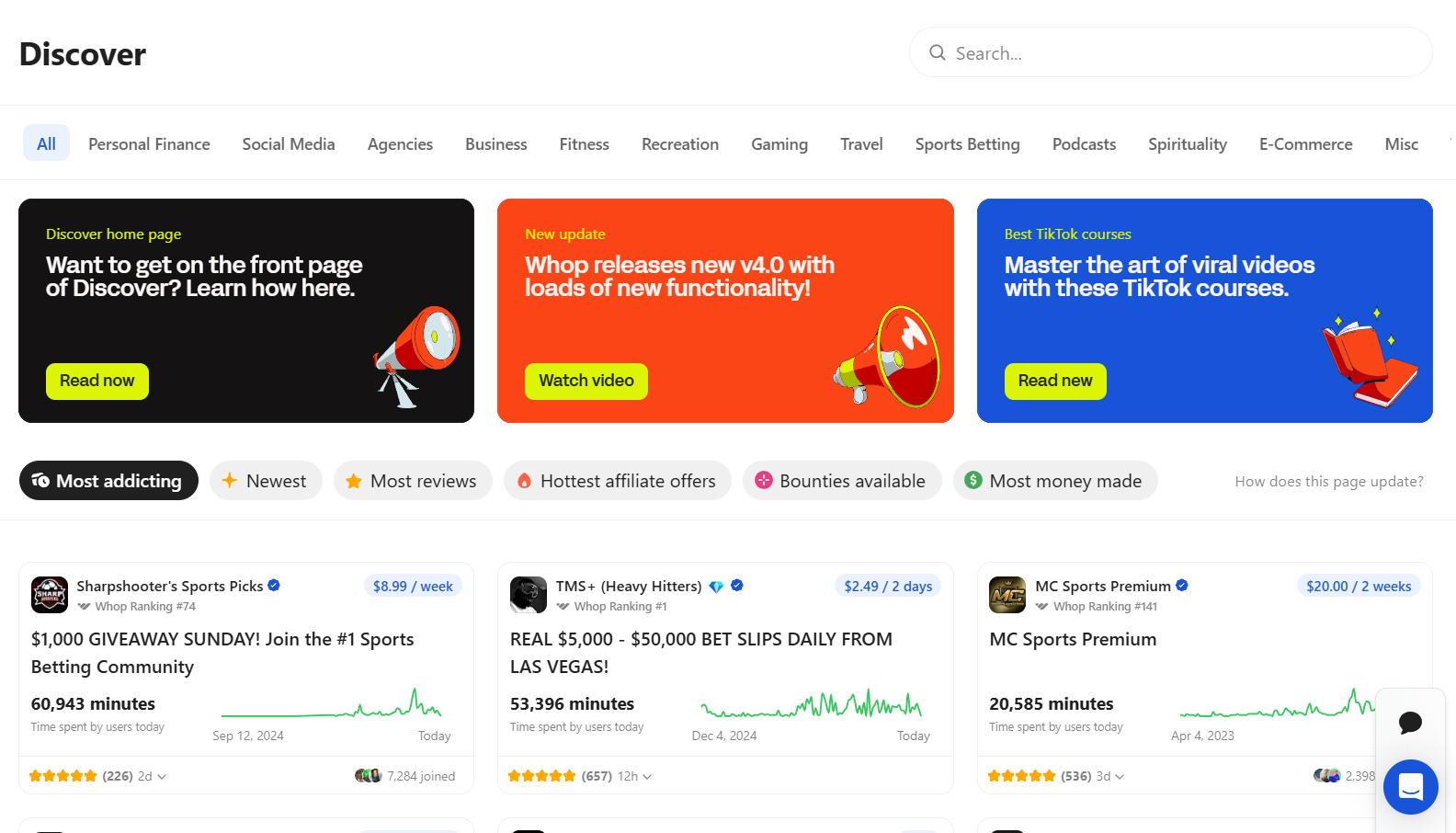
Data annotation and AI training aren't the only side hustles for making money online. Why not earn from your passion and start your own business?
On Whop, you can create a free “whop” and sell digital products and online services. You can set your own prices, and tailor your products by adding native apps to your whop. That includes courses, eBooks, community memberships, email newsletters, and much more.
Whilst data annotation offers a level of flexibility, platforms like Whop offer much more. You won’t need to go through a lengthy application process, either. Anyone can create a whop and start making money online.
For example, you could create:
- Online community: Setting up an online community and selling paid memberships can become a lucrative business. It’s a good way to connect with likeminded people, and earn money at the same time. You could set up a community for data annotators or digital creatives looking for work.
- Digital guides and templates: If you’re a home working guru, you can put your knowledge to good use by creating eBook guides with your top tips and strategies. Or why not use Notion or Canva to create a scheduler template for students planning their freelance work?
- Courses: Whop includes an online course creation tool, free of charge. So, you can create a course to share your skills, and sell access to it from the same platform.
To date, over a billion dollars has been made by creators on Whop. So, it makes sense to give digital product creation a try for your next side hustle.
Not sure what you’d create or how it would work? It’s actually much more simple than you’d think.
Let’s take a look at an example in more detail. Hundreds of learners have enjoyed Ritesh Verma’s coding and SAT courses. That’s why he’s earned a 5* rating on Whop.

His free course teaches students how to create an Amazon Stock Monitor bot with NodeJS.
There are three main parts to this product, which have been created using Whop’s native apps:

- Coding An Amazon Stock Monitor: This is the main course, and uses Whop’s Courses app.
- Free Chat: As it sounds, this provides free chat functionality with Whop’s Chat app.
- Free Prizes: This uses the Whop Wheel app to offer free prizes to students on the course - and they’re covered entirely by Whop!
What’s also important is how Ritesh’s products are tiered. They’re not just lumped together in one package.
You can bundle apps together into different products and sell them on Whop to cater to different customer needs.
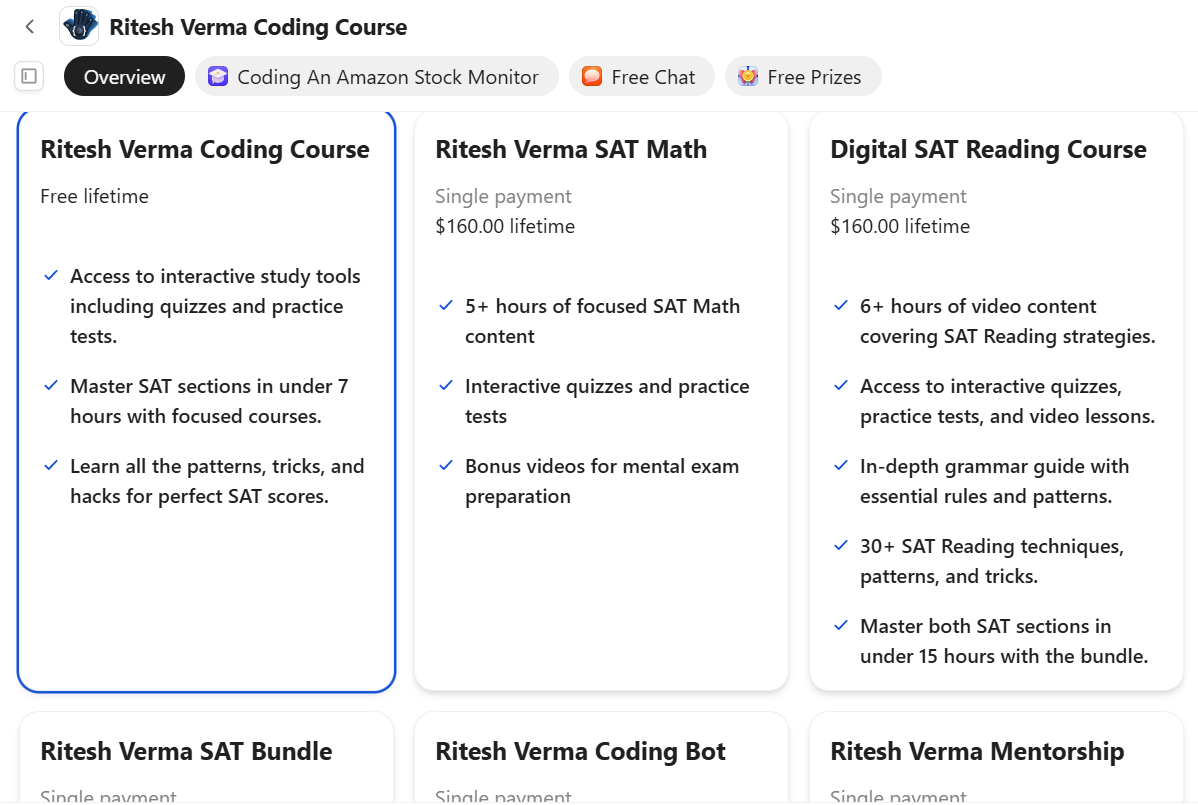
For example, the free coding course contains several freebies, like the chat function. Ritesh then sells his other paid courses and mentorship service separately. He also sells his two SAT courses together in a single bundle at a reduced price.
So, there are lots of different ways to maximize your earnings from digital content.
Think courses are the right fit for your business? Check out our step-by-step guide to selling courses online.
Amazon Mechanical Turk

One well-known alternative Data Annotation is Amazon’s Mechanical Turk platform. There are a few different types of project to work on, including image processing and information gathering.
However, it’s important to note that the platform doesn’t offer high earnings. In an article from the New York Times, reporter Andy Newman earned just $7.83 working on the platform for an eight-hour period. That’s just 97 cents per hour - which is clearly not a living wage.
So, you might only want to try this out if you’re looking for extra pocket money.
Remotasks
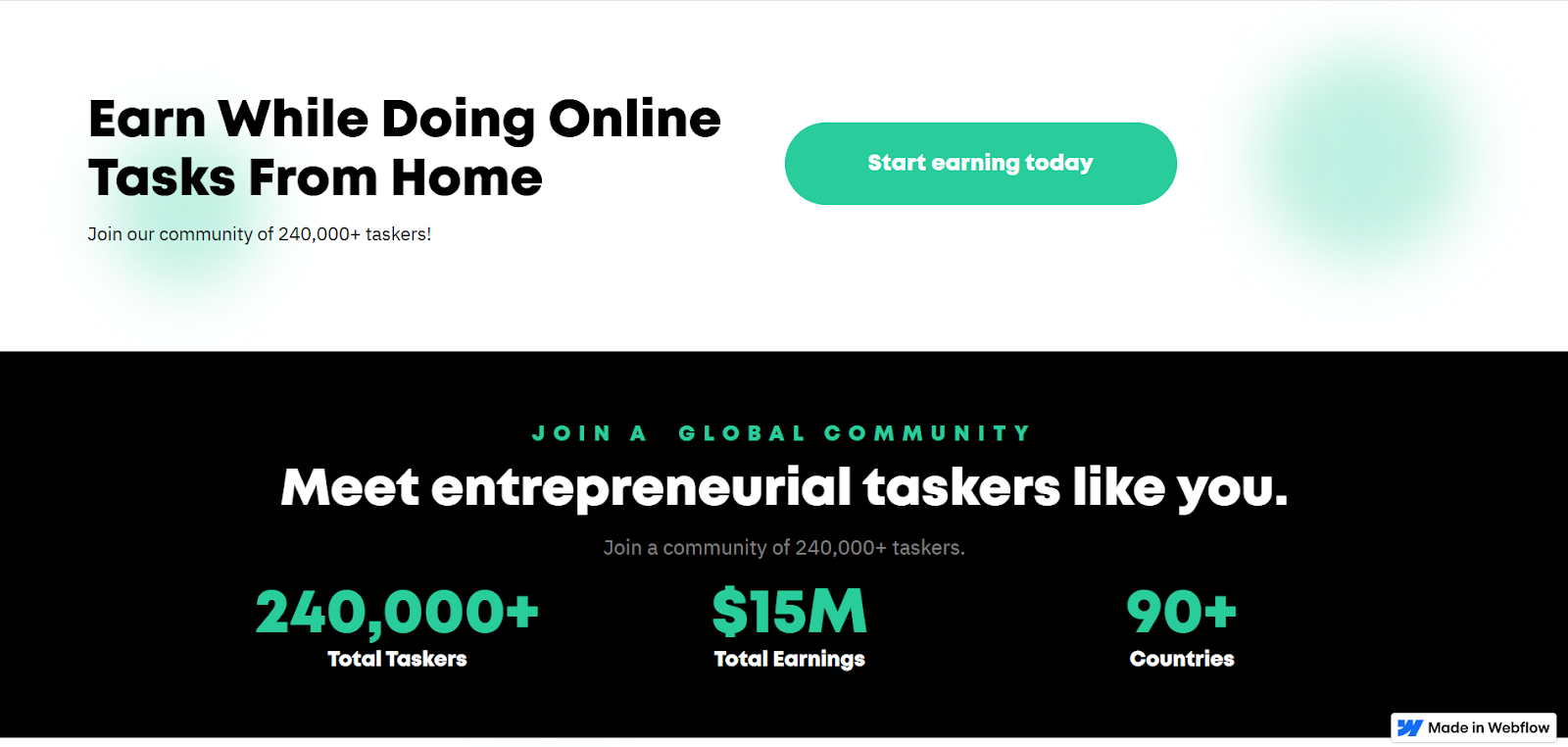
Remotasks is another popular data annotation platform, where you can work on tasks like image labeling and audio transcription. The platform boasts over 240,000 taskers and $15 mil in earnings. Like Data Annotation Tech, it also offers free training, so it’s a good option for beginners.
Although it’s available in 90+ countries, the U.S. isn’t one of them - nor is the U.K. or Canada. So, you’ll need to check if your country is eligible first.
User reviews, like this one on Reddit, also suggest some issues with the stability of the work.

CrowdGen by Appen
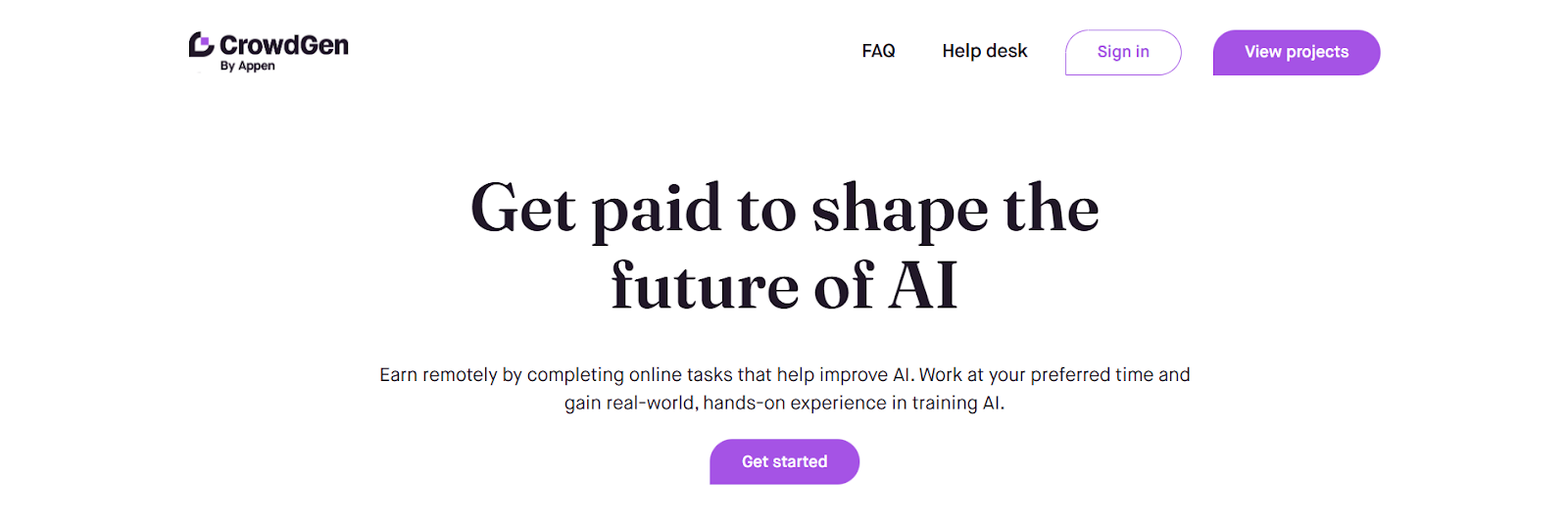
Another platform you might be familiar with is Appen. CrowdGen is their platform for contributors. Remote workers are paid on the platform for training AI, including long-term and one-off projects. According to their website, CrowdGen is available in 170 countries and has over 1 million members.
They offer guides and practice quizzes to help candidates to prepare for the platform’s application process, and there are flexible hours to suit all kinds of remote workers.
Although they claim to be committed to fair pay, there are a number of negative reviews for the platform online, like this one on Reddit.

Others have commented on payment delays and the lack of support for contributors.

Outlier
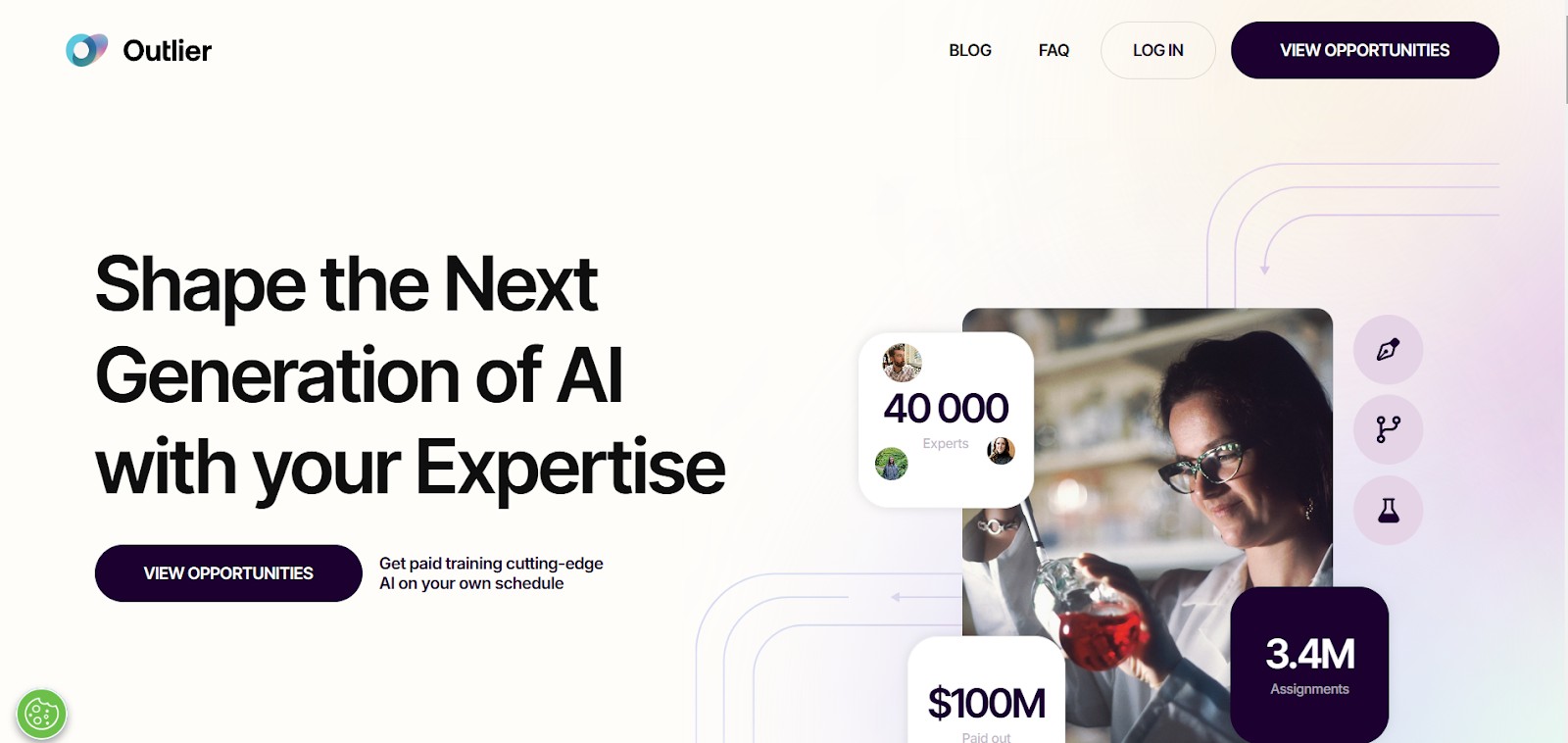
Owned by Scale AI, who also owns Remotasks, Outlier is another popular AI training platform. On Outlier, you’ll complete a variety of different tasks, including rating model responses, and helping models to generate and classify information.
Outlier is a bit different from other platforms on this list, as it focuses on specialisms. So, they’re looking for AI trainers with expertise in areas like History, Coding, Data Science, and Creative Writing. There’s also a Generalist specialism, as well.
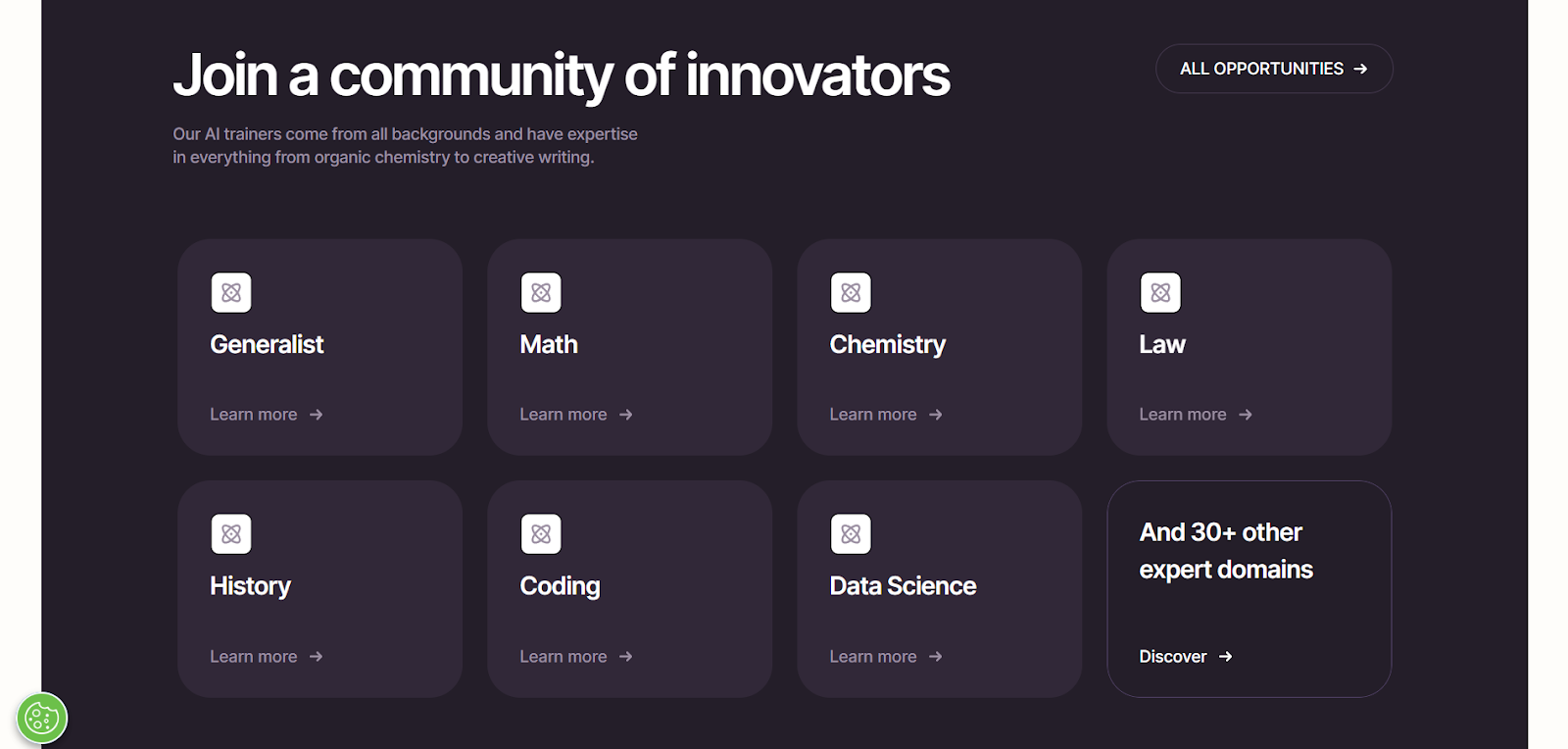
At a minimum, you’ll be expected to be a junior or senior working towards an undergraduate qualification in your chosen specialism.
However, you’ll stand a better chance if you have a degree, master’s, or PhD in your field. So, Outlier job roles are typically aimed at those with academic qualifications.
Although the platform has more strict requirements, it seems to have similar issues to other data annotation platforms. For example, this Indeed reviewer comments on the inconsistency of the work, unclear pay rates, and unpaid training.
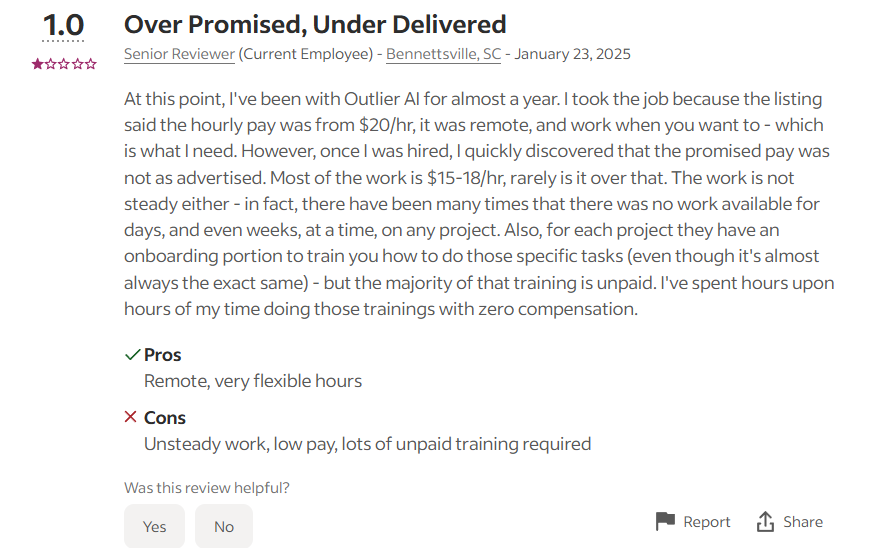
But if you’re looking for interesting work with flexible hours, you might prefer this option.
Stellar AI
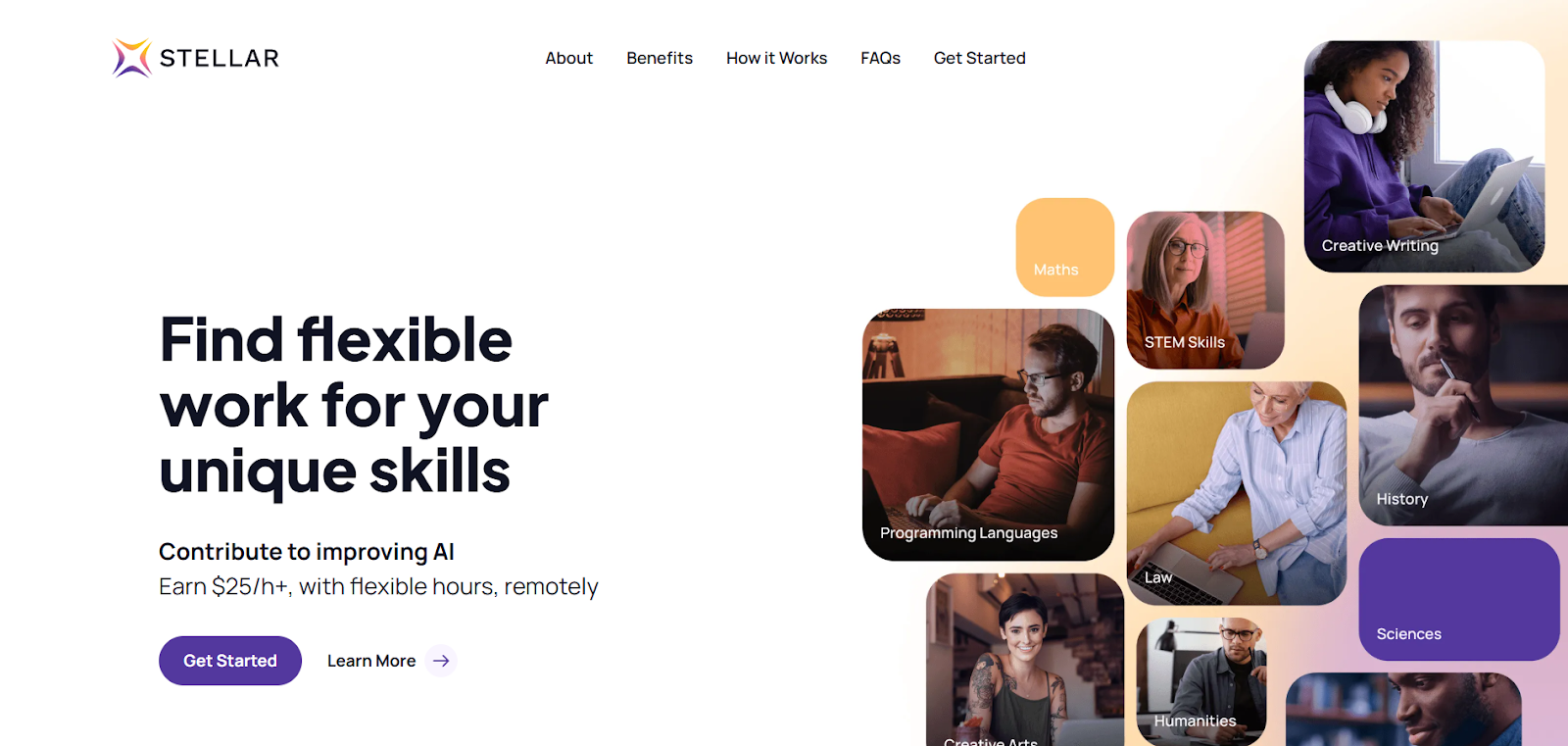
Stellar AI is also specifically looking for university graduates with a specialism. They offer $25+ per hour, and like the other platforms on this list, you can choose the hours that suit you.
Reviews for Stellar AI seem largely positive, with users complementing the platform’s communication.

Read this guide for more tech side hustles.
Create a digital side hustle that works for you on Whop
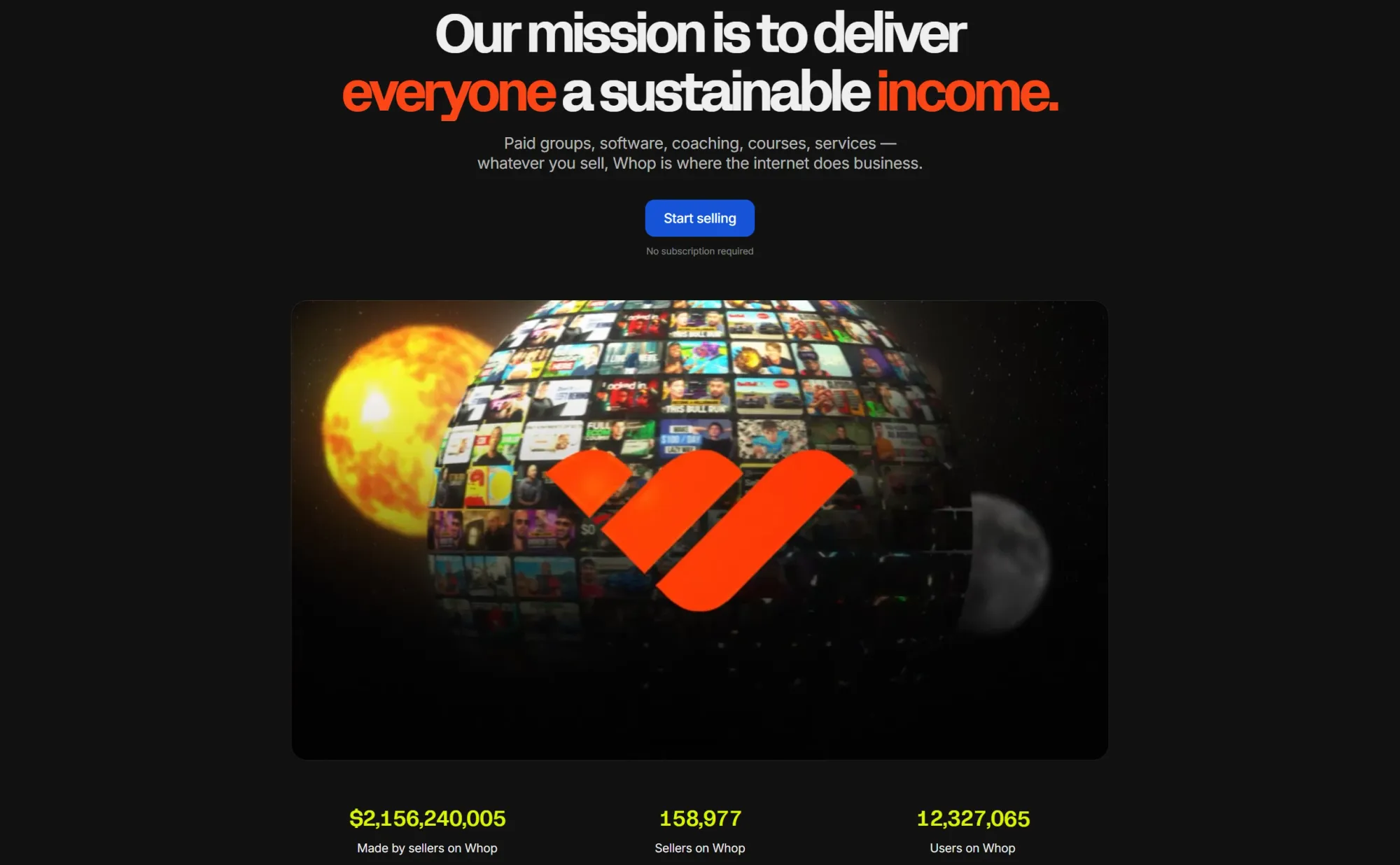
Although data annotation is a legitimate way to earn money online, it’s not always the most stable option. This type of work is dependent on customer demand. So, if there’s no work available, it’s difficult to boost your income.
It’s better to avoid putting your eggs in one basket. (And that’s also a great excuse to start setting up your own business on the side!) Whop provides all the tools you need to sell digital products. That includes:
- eBooks
- Digital courses
- Web apps
- Online services
- Digital communities
- Templates
- Coaching sessions
- and much more!
There are unlimited possibilities for what you can create and sell with Whop. It takes under ten minutes to create your whop, which will form your home on the platform. Plus, with transaction fees from just 2.7% + $0.30, you could take advantage of some of the lowest fees.
Start selling on Whop and transform your business dreams into a profitable reality.
Data Annotation Tech FAQs
Is Data Annotation Tech legit?
Yes, Data Annotation Tech is legit - you can earn money from this platform by doing data annotation work. Many users appreciate the flexibility of the work, as well as its easy entry.
However, others report issues with poor communication and inconsistent work on the platform. So, it may be more suitable as a side hustle than a full-time job.
How much does Data Annotation Tech pay?
According to their website, Data Annotation Tech pays $20+ per hour for data annotation tasks, and $40+ per hour for coding tasks.
Is data annotation difficult?
Data annotation tasks can vary in difficulty. Although most are relatively simple, like text annotation or image classification, they require strong attention to detail and pinpoint accuracy. They can also be very time-intensive.
So, if you’re detail-oriented, you’ll likely find these tasks easy to get to grips with. But they’re not always as intuitive as other side hustles, like running a community or content creation.


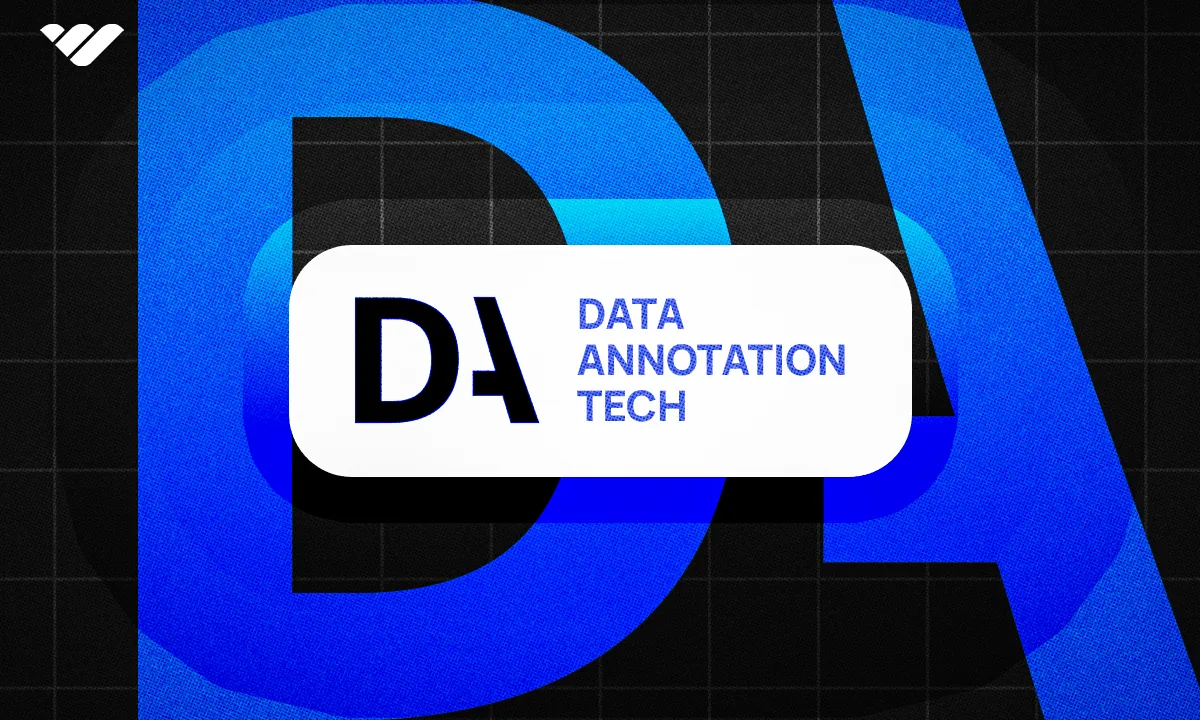
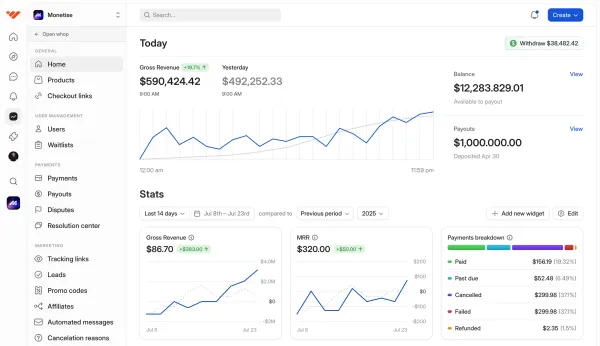
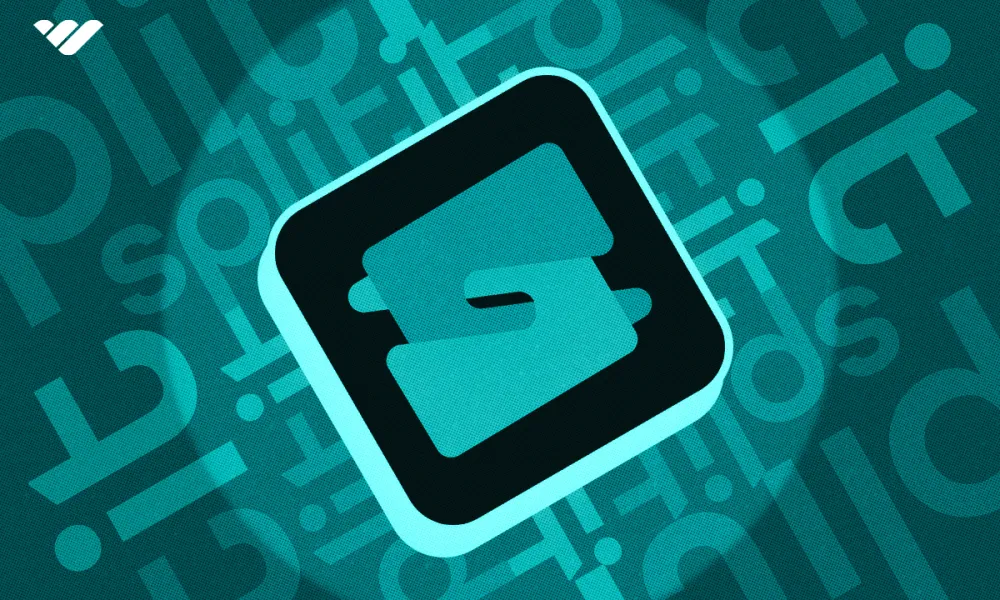
![Mighty Networks: is it the best choice for your community? [2026 review]](/blog/content/images/size/w1000/2024/05/What-is-Mighty-Networks-Features--Pricing--and-Alternatives-2024-Review.webp)

![The best online newsletter platforms [2026]](/blog/content/images/size/w1000/2024/05/Best-online-newsletter-platforms.webp)
![Top 17 best online course platforms to sell your course [2026]](/blog/content/images/size/w1000/2024/06/Best-Online-Course-Platforms.webp)
